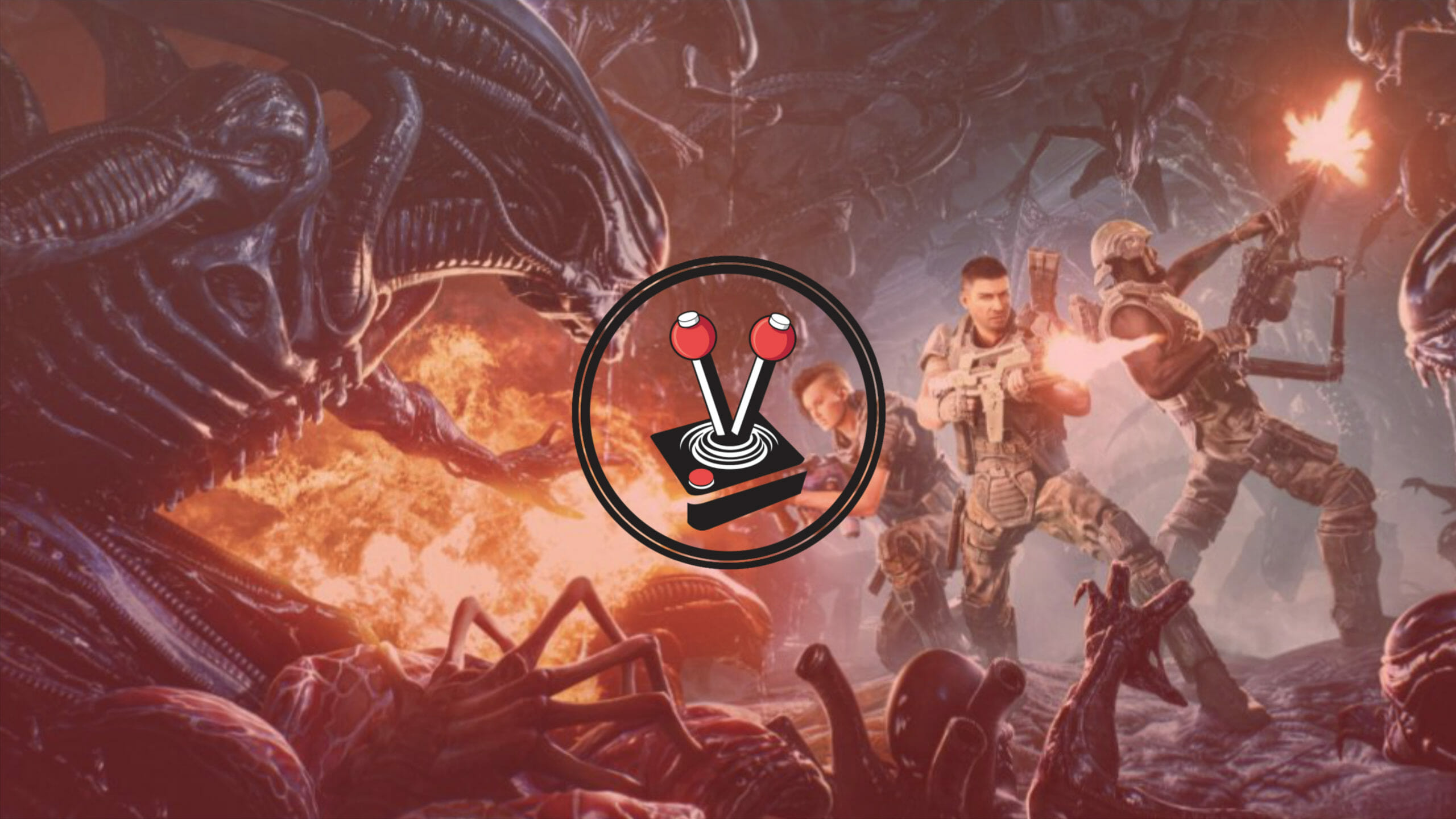The Alien franchise has made it clear how the Xenomorph is a terrifying creature. It is “the perfect organism”, after all, and it moves, strikes, and kills with an extraterrestrial precision. 2014’s Alien Isolation brought the horrific wonders of the Xenomorpth and Ripley’s daughter’s plight to life, allowing gamers to experience just how frightening this creature could be. The game was a hallmark and breath of fresh air in an ageing franchise expanded upon with very poorly done video game adaptations. Alien Isolation was as close to ‘perfect’ as the Alien Xenomorph is believed to be. Alas, and with a heavy heart, it appears as if Aliens: Fireteam Elite, the newest video game title to join the franchise, proves how the Alien franchise curse is still very much alive and kicking.
Of the plethora of available Alien video games, few have captured the incredible intensity of the original movie in the way Alien: Isolation has. It continues to remain a love letter to the original film in all the ways that matter, while keeping the franchise modern and fresh. This time around, however, Cold Iron Studios attempts to capture the second movie’s marriage of pulse-pounding tension and hyperactive twitch-shooter elements over the original’s tense atmosphere. Aliens: Fireteam Elite is a multiplayer title drawing clear inspiration from Left 4 Dead and Evolve, while adding a bit of cover shooter gameplay for good measure. There are hundreds, if not thousands, of Xenomorphs to shoot apart in each mission, and a whole lot of retro sci-fi jargon to get to grips with. On paper, this is a winning formula. In practice, however, it is a wholly different story.

At its core, Aliens: Fireteam Elite is a solid third-person shooter. Missions can be done solo with two artificial intelligence driven synthetics or with up to two others via online multiplayer. The game features a hub where players can run around and be silly while waiting for their friends to log on and load in. The hub also serves as a means to get around and upgrade a few aspects of the player character. There is a requisitions officer who sells weapons, new cosmetics, and consumable items; a commanding officer who will elaborate on new-found intel after each mission, and a few non-playable characters (NPCs) to make the area feel lived in. This hub area is much smaller than it may sound, as it consists of two or three main areas only. Unfortunately, the process of running between the various NPCs for nothing more than basic lore dumps or services, becomes tedious very quickly. The hub is presumably meant to be filled with players (as all party members usually share this space). However, the decision to keep it largely empty only serves to make it feel hollow (even with a full party).
From the hub, players can load into new missions. There are four campaigns to choose from, each of which features three main levels, each with its own recommended power level. It starts quite easily, with a basic search and rescue mission eventually ending off with an all-out evacuation; seconded with a basic search and rescue mission that eventually ends off with an all-out evacuation. The third campaign is quite different, however, as the player and their team are sent on a search and rescue mission that eventually ends up being an all-out evacuation… I jest, but the originality in these missions is questionable at best. Instead of giving players a good and intriguing story to shuffle through and push on, Cold Iron have decided to give players a quick and dirty (sometimes kind of humorous) push toward the next goal. Besides, the sheer number of Xenomorphs on display here is crazy, and the game needs a way to justify them all, whether the reasons make sense or not at all.
Getting around the idea of there always being hundreds of Xenomorphs to deal with is fine, and is easily done. The big mistake, however, is how not a single one of these feels vastly different from the other. The game touts its many different alien types with pride, showing each off in pre-release materials, with the added promise of one or two more once players get their hands on the game. This sounds great and dandy on paper. Sadly, the majority of the aliens are nothing more than simple recolours of one another! In practice, some Xenos are vastly different. The small runners, of which players will face ad nauseam in any given room, are tiny and weak. Drones, on the other hand, are supposed to be the normal Xenos encountered throughout the films. Bursters are runners, but with eggy heads that burst; while Prowlers are drones, but with Tron cosplay. There are also face-huggers and spitters, and a few bigger Xenomorphs… most of which are literally just recolours of the aforementioned xenos, but with more health. The sheer number of aliens to fight is, quite simply, insane – but in a good way.

The similarity and familiarity of xenomorphs aside, perhaps the most glaring issue is how dumb the AI is for these creatures. Xenos will not flank or sneak about. They will not hide in shadows and wait for the correct moment to strike, or even just run away at the sight of fire. Instead, hundreds of them will bull rush players in the most direct way possible. The directly goes against everything the Aliens franchise has delivered about these creatures, turning them into nothing more than easily dealt with canon fodder. It does appear as if the idea is for higher difficulties to further unlock the way “the game is meant to be played”. Unfortunately, this is not the case – at least not during our testing in the review period. The few times we managed to get the game to work on higher difficulties (matchmaking is incredibly buggy at the moment), nothing changed about the AI. It was noticed, however, how the synthetics gained better aim whereas the aliens simply gained more health. Alas, nothing new in the AI or movement department; resulting in waves and waves of mindless bullet sponges. This is a glaring problem, and takes away from the enjoyment of the title; given how it removes any need for strategy or careful planning – just aim and fire, and the job is done.
Another really important point worth mentioning is how mission design lacks originality. Throughout every mission, players are fed objectives. These, for the most part, consist of going to a room, pulling a lever/entering a code/calling an elevator… again, and again, and again. Once done, players need to defend their spot for a good five to ten minutes as Xenos climb out of holes seemingly ad infinitum. Once done, new objectives are relayed, and another room needs to be visited. This is, essentially, the extent of what the game has to offer. It is a rinse and repeat experience, with the odd addition of humour or friendly banter via the mission control.
Beyond the missions and their glaring issues, there are a few other facts that do work very well. The class system, for instance, is wonderful, if a bit annoying. There are five classes to choose from: Gunner, Demolisher, Technician, Doc, and Recon. The idea behind these classes is for players to pick and choose a balanced team to work together. Every class has its active abilities, passive perks and compatible weapons. As expected, Gunners are essentially the basic boys. They can use all types of guns and they come equipped with Frag Grenades. Technicians, on the other hand, specialise in turrets. They can use hand cannons and shotguns and have a cool shoulder-mounted missile launcher and reusable turret. Similarly, Demolishers specialise in massive automatic machine guns that lock onto their targets without the need to aim. Doc’s are predictably meant to heal the team. They come with a trauma station and have more combat stims available. Interestingly, Recon is only unlocked after finishing the campaign and is effectively a ‘sniping class’ – which is a weird addition given how the game functions in its current state (more about bull rushing versus strategy).

All classes come with a fairly in-depth progression system as well. At each level, players will unlock more abilities and perks. These can be slotted into their ability screens and swapped out in between missions. This system works fairly well, with certain perks being larger than others and needing more slots, while others are easier to slot into the fairly limited space players are given at first. As with all facets of gameplay in Aliens: Fireteam Elite, however, the classes system is not without issues.
Each campaign features three missions. To progress while keeping within the power level recommendations, these have to be replayed. Over and over again. The goal is to earn enough money for better weapons and to earn enough experience to level and unlock more abilities and perks. While it is possible to carry on to the next mission with the same power level from the previous one, the sheer number of drones and their insane health buffs (even at Casual difficulty) is outrageous. In order to proceed without losing a controller or popping a vein, repetition is, simply put, a requirement. There is also a challenge card system, which remains a mystery given how even after completing all available missions the cards remained elusive.
Visually, Aliens: Fireteam Elite is a good-looking game. While it will not win any awards, it features fairly decent multiplayer graphics. Lighting is especially well done, and the developers may be applauded for the originality in how missions look and are set apart from one another. What is not great, however, is how many glaring shortcuts the developers seemingly had to take to keep things running as smoothly as the game does. Shortcuts include leaving entire hallways void of any ambient objects and covering the holes where the Xenomorphs come from with nothing but pitch-black textures meant to simulate darkness. While shortcuts are part and parcel of game development, these are simply too glaring not to mention. A recent beta event for an upcoming game proved just how smooth a multiplayer Left 4 Dead-type game can run without any of these shortcuts, and it leaves a taste of disappointment on the tongue for those who play Aliens: Fireteam Elite.

Even worse, however, is the extremely hollow adaptation of the franchise’s coveted sound design. Say what you will about any previous Aliens game; they have always sounded incredibly good. Alien: Isolation has impeccable sound design, with cues no player running a normal stereo system would ever notice. Its folly was exceptional, to say the least. Conversely, Aliens: Fireteam Elite not only features one of the poorest names of all Alien video games, but also some of the worst sound design yet heard. Sharp pangs meant to enhance plot twists become lost in the gunfire, and musical cues fall flat against less than desirable stereo output. It makes figuring out where aliens are coming from at any given time a proper chore, resulting in players having to rely on vocal cues from their Overwatch-type operator yelling “LEFT”, “COMING FROM THE FRONT” or “CHECK THE TUNNEL” over and over again throughout every single mission. Guns (especially the iconic assault rifle) sound like hollow knock-off versions of those featured in the films, and the motion sensor is nothing more than a constant unnecessary ping; as where the xenon are coming from ultimately matters very little as turrets take care of 90% of the runners anyway.
It comes as a massive disappointment to call Aliens: Fireteam Elite a mess, but that is exactly what it is. Take some solace in knowing many of the issues displayed in the game can easily be patched out; but gamers should never bank on that happening when purchasing a title. The game has a few things going for it (namely the franchise), but the sheer amount of unfortunate design decisions, whether out of budgetary constraints or release schedule, overshadows even those. With great sadness, Aliens: Fireteam Elite does nothing more for the Aliens franchise than Aliens: Colonial Marines before it… and that is a crying shame.
Verdict:
Dissapointing
| PROS | CONS |
| Classes are nice | Bad sound design |
| Mission settings look wonderful | Repetition begets tediousness |
| Missions are all the same |
Title reviewed on Xbox Series X with code supplied by Focus Home Interactive.
Learn more about our review methodology here.
Junior Editor at Vamers. From Superman to Ironman; Bill Rizer to Sam Fisher and everything in-between, Edward loves it all. He is a Bachelor of Arts student and English Major specialising in Language and Literature. He is an avid writer and casual social networker with a flare for all things tech related.





![Incredible Custom Far Cry 6 Xbox Series X up for grabs! [South Africa]](https://vamers.com/wp-content/uploads/2021/10/Vamers-Giveaways-Gaming-Custom-far-Cry-6-Xbox-Series-X-banner-218x150.jpg)
















